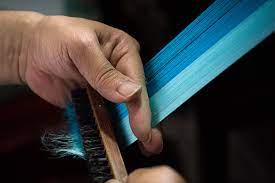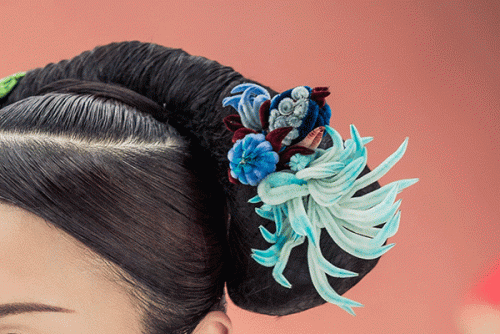
The production of velvet flowers is a traditional skill in Nanjing, Jiangsu Province, and is also one of the provincial intangible cultural heritage lists in Jiangsu Province. It has a homophonic sound of "Ronghua" and implies auspiciousness and blessings. Ronghua is made from natural silk and copper wire as raw materials, and its themes and symbolic shapes are mostly taken from the folk symbol of auspiciousness to express the meaning of auspiciousness. The production of velvet flowers began in the Tang Dynasty, and during Empress Wu's reign, Nanjing velvet flowers were listed as royal tribute as Yangzhou velvet flowers.

In the Ming Dynasty, there were specialized workshops in Nanjing Ronghua, which had a certain scale of production, which was related to the development of Nanjing's cloud brocade industry at that time. The process of producing Yunjin industry generates a large amount of silk waste, which provides material conditions for the rise and development of velvet production technology. In the Qing Dynasty, Nanjing velvet flowers were presented as tribute to the court. At that time, the Nanjing government specifically had seven bedrooms and two bedrooms. During the Kangxi and Qianlong periods, Nanjing's velvet production reached its peak and its products were sold to various regions. There are many types of velvet production, with traditional forms mainly including sideburns, corsage, foot flowers, hat flowers, cover flowers, fireworks, theatrical flowers (used for stage performances), as well as later developed velvet phoenix crowns, flowers, birds, insects, fish, characters, animals, and bonsai architecture.
The velvet flowers are mainly colored in red, water red, peach red, and other colors, supplemented by pink, dark green, green, and other colors, with yellow and gold embellishments. The traditional patterns of velvet flowers mostly symbolize auspicious phoenix, cornucopia, double happiness, pomegranate, and various flowers, such as jasmine, white orchid, jasmine, frangipani, hibiscus, rose, etc. The patterns of velvet flowers have similarities with traditional Chinese folk art themes, and their shapes have Chinese ethnic characteristics. The production process of velvet flowers is divided into 9 steps


They are silk refining, dyeing, drying, picking, ironing, pointing, flower spreading, sticking, and packaging. The traditional technique of velvet flowers was originally inherited and passed down through the words and deeds of the inheritors, relying on the apprenticeship system to inherit itself. As a carrier of folk culture, it embodies people's unique spiritual values and ways of thinking, adding rich and diverse colors to society.





